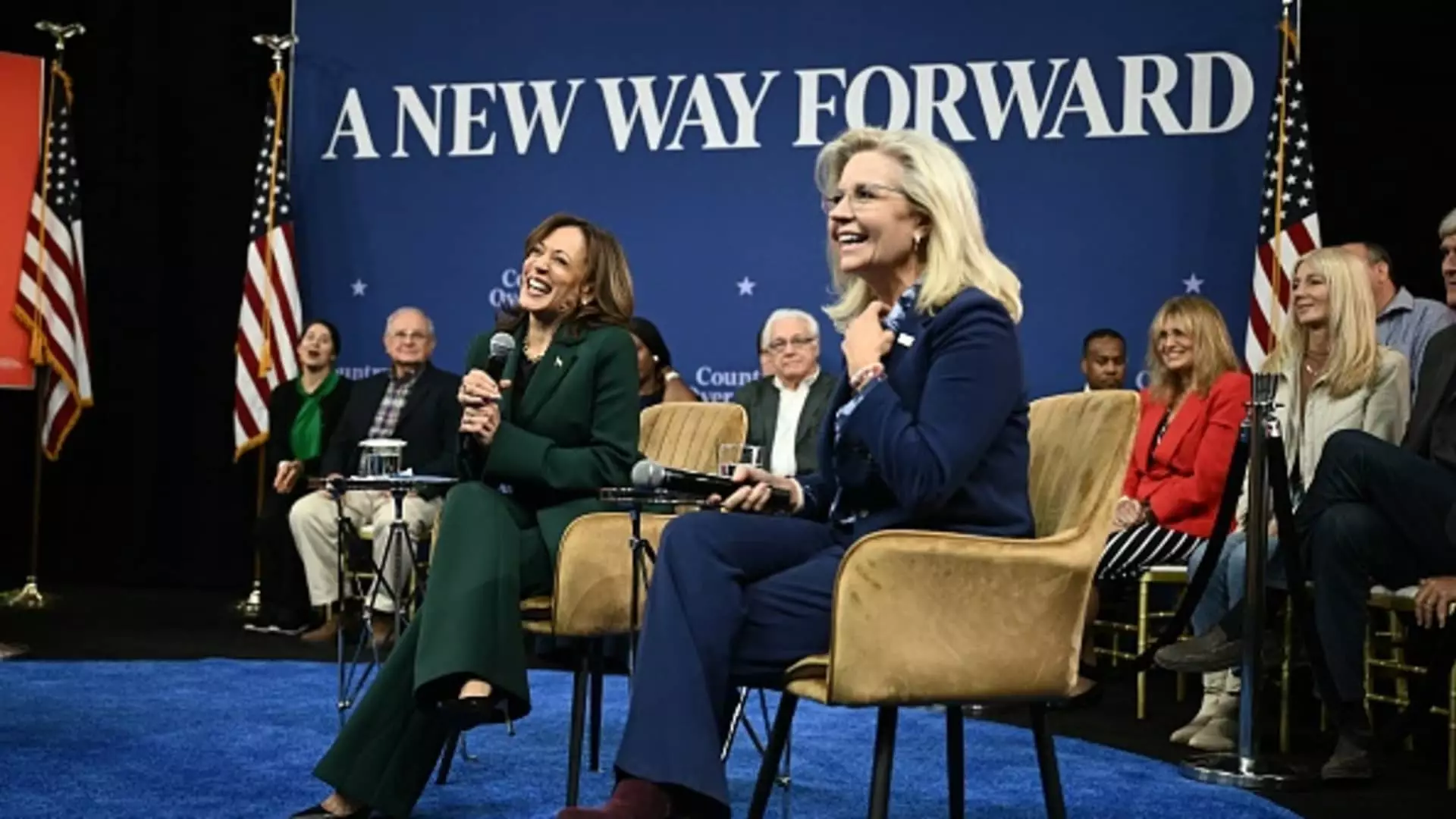In a politically charged environment, where parties often find themselves in stark opposition, a surprising alliance is emerging in battleground states such as Pennsylvania, Michigan, and Wisconsin. Vice President Kamala Harris and former Republican Representative Liz Cheney have taken to the stage in a series of moderated discussions that emphasize a collaboration bypassing traditional party lines. Their message, encapsulated in Cheney’s declaration that “it’s not about party, it’s about right and wrong,” illustrates an urgent call to Republicans and Democrats alike to prioritize principles over partisan allegiance.
This initiative resonates with the increasing frustration among voters who feel unrepresented by their parties. Cheney’s appeal to conscience voting reinforces a sense of agency among constituents, suggesting that aligning with personal beliefs might provide a more authentic electoral choice. As Cheney pointed out, many Republicans may choose to support Harris without public declaration, highlighting the discontent current republican policies have instigated within their ranks.
Interestingly, Cheney’s endorsement of Harris is rooted in her conservative convictions. She passionately states that her experiences have led her to value the Constitution above party loyalty. For Cheney, supporting Harris is not an abandonment of her principles but rather an alignment with a candidate who mirrors her commitment to democratic values and the rule of law. This sentiment is palpably meaningful given the current tumultuous political climate, where the former President’s allegiance to the Constitution has come under scrutiny.
In discussing women’s reproductive rights, Cheney courageously acknowledges the unsustainability of draconian restrictions imposed by various states. Her “pro-life” stance, coupled with a critique of extreme measures taken by lawmakers, positions her as a unique voice willing to challenge the status quo among her party constituents. In a parallel effort, Harris and her campaign are strategically reaching out to disillusioned Republicans, effectively creating a platform in which moderates feel safe to express their dissent regarding Trump-era policies.
Harris’ commitment to inclusion is evident, as she emphasizes her desire to invite diverse perspectives into her potential administration. “We need a healthy two-party system,” Harris asserts, arguing for the necessity of open dialogues grounded in facts. This reinforces the idea that a vibrant democracy relies on the free exchange of ideas—something that has been increasingly stifled in contemporary politics.
In her quest for collaboration, Harris recognizes Cheney’s influence among traditionally conservative voters. Cheney is regarded as a pivotal asset in broadening Harris’ appeal, offering what political strategists refer to as a “permission structure.” This framing empowers Republicans hesitant to stray from their party’s norms, thereby legitimizing their choice to vote for a Democratic leader.
Their partnership extends beyond domestic issues, notably in foreign policy, where Cheney is vocal about her disapproval of Trump’s isolationist tendencies. By openly criticizing policies that threaten national alliances, such as NATO, Cheney positions herself as a patriotic advocate for a stronger, more engaged U.S. on the global stage. In recent statements, she has articulated how a disengaged America risks its own security, warning audiences that a failure to uphold commitments could endanger the nation’s freedoms.
Conversely, Harris has garnered Cheney’s approval for her assertive stance on foreign affairs, especially regarding support for Ukraine amidst its conflict with Russia. The synergy between their perspectives on foreign policy creates a compelling narrative for voters disenchanted with the aggressive, unilateral measures of the past.
As the political landscape evolves, the collaboration between Kamala Harris and Liz Cheney could signify a pivotal shift towards a more inclusive democracy. With their united front advocating for the values they both share, they challenge the entrenched partisan politics that have characterized recent elections. Their message resonates with many Americans, seeking clarity and purpose in their votes, urging them to look beyond mere party affiliation.
While skepticism about bipartisanship still looms, this alliance highlights a crucial possibility— that unity amidst diversity can emerge even in tumultuous times, offering a semblance of hope for a more principled political discourse. The ultimate question remains: will disillusioned voters respond positively to this call for change, and can this newfound collaboration pave the way for a more principled political future?


Leave a Reply